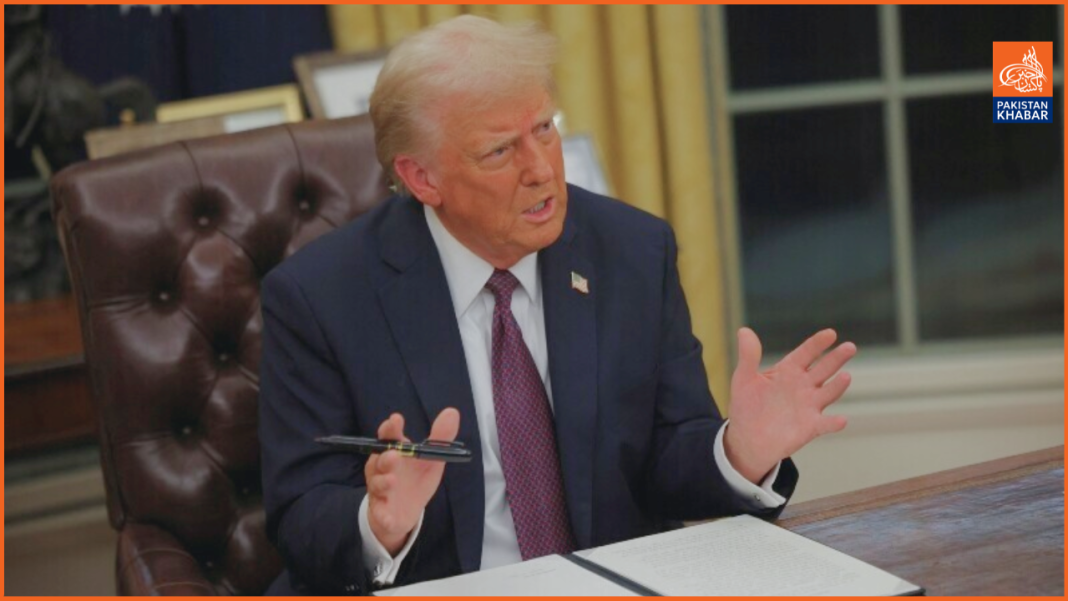On his first day in office for his second term, U.S. President Donald Trump signed a series of executive orders aimed at implementing his agenda and reversing many of his predecessor’s policies. The actions, signed at a ceremony held at the Capital One Arena in Washington, D.C., have sparked significant debate and set the tone for the new administration’s approach to both domestic and international matters.
One of the first actions President Trump took was to rescind 78 executive orders, memoranda, and other directives from the Biden administration. The move, which Trump labeled as the removal of “destructive and radical” policies, aims to undo key components of the prior administration’s agenda.
Among the most notable actions signed on day one were measures that align with Trump’s long-standing positions on immigration, climate change, and national security. One of the most significant orders declared a national emergency at the U.S.-Mexico border, a move that will pave the way for increased military presence and stricter enforcement of border security. Trump has long campaigned on a promise to curb illegal immigration, and this executive order takes a firm stance by halting all illegal entry into the United States and beginning the process of deporting individuals with criminal backgrounds.
In another key action, President Trump signed an executive order to withdraw the United States from the Paris Climate Agreement, a major international pact aimed at reducing global carbon emissions. Trump has consistently criticized the agreement, stating that it unfairly burdens the U.S. economy while allowing other countries, such as China, to avoid similar obligations. The withdrawal signals a dramatic departure from the climate policies championed by the Biden administration.
Trump also made headlines with a move to remove the U.S. from the World Health Organization (WHO). Citing the organization’s failures and its disproportionate costs to the U.S., Trump accused the WHO of ripping off America, especially highlighting the financial disparity between what the U.S. contributes and what other countries, like China, pay. The withdrawal from the WHO is seen as another effort to reduce U.S. involvement in international organizations that Trump believes do not serve the country’s interests.
In addition to these high-profile actions, Trump signed several orders that focus on domestic issues. Among them was an order reinstating the federal death penalty protocols, which had been suspended during Biden’s presidency. The move also includes a broad overhaul of federal hiring practices, with an emphasis on merit-based selection and a rejection of diversity, equity, and inclusion programs across government agencies.
Trump continued his aggressive push for deregulation with orders that include a hiring freeze for government agencies and a comprehensive review of foreign assistance programs. The review will pause all new obligations of U.S. foreign development assistance for 90 days, to ensure that foreign aid aligns with Trump’s “America First” policy. His administration has long advocated for reassessing U.S. involvement in foreign aid and international commitments, claiming that these efforts have often been misaligned with American priorities.
Another significant move was the reinstatement of Cuba on the U.S. list of state sponsors of terrorism. This reversal of a decision made by the Biden administration further complicates diplomatic relations between the U.S. and Cuba, especially following recent agreements aimed at improving relations and securing the release of political prisoners.
Among other orders, Trump sought to delay a potential ban on the popular social media platform TikTok for 75 days. The delay gives the administration time to negotiate terms that could allow the app to remain operational in the U.S., which is used by millions of Americans. Trump’s comments about seeking a possible joint venture between TikTok and U.S. entities highlighted the economic potential of the app, which he estimated could be worth a trillion dollars.
These actions, which were signed across several locations, also included measures to honor American history, such as the renaming of Mount Denali back to its previous title, Mount McKinley, and a move to rename the Gulf of Mexico as the Gulf of America. Trump’s focus on American “greatness” was further reflected in his order to enhance domestic energy production, particularly in Alaska, where new resource development projects are expected.
In the international arena, Trump’s executive orders also targeted a wide range of policy issues, including increasing efforts to curb drug trafficking, re-designating cartels as foreign terrorist organizations, and implementing stringent policies for national defense.
President Trump’s first day in office was marked by a series of sweeping changes across numerous sectors, many of which are expected to reshape U.S. policy for years to come. With these executive orders, Trump has made it clear that he intends to follow through on his campaign promises and bring significant reforms to both domestic and international policy, including a clear focus on protecting American interests and reducing international commitments. These bold moves have already ignited debate across the nation and will undoubtedly shape the trajectory of the Trump administration moving forward.




